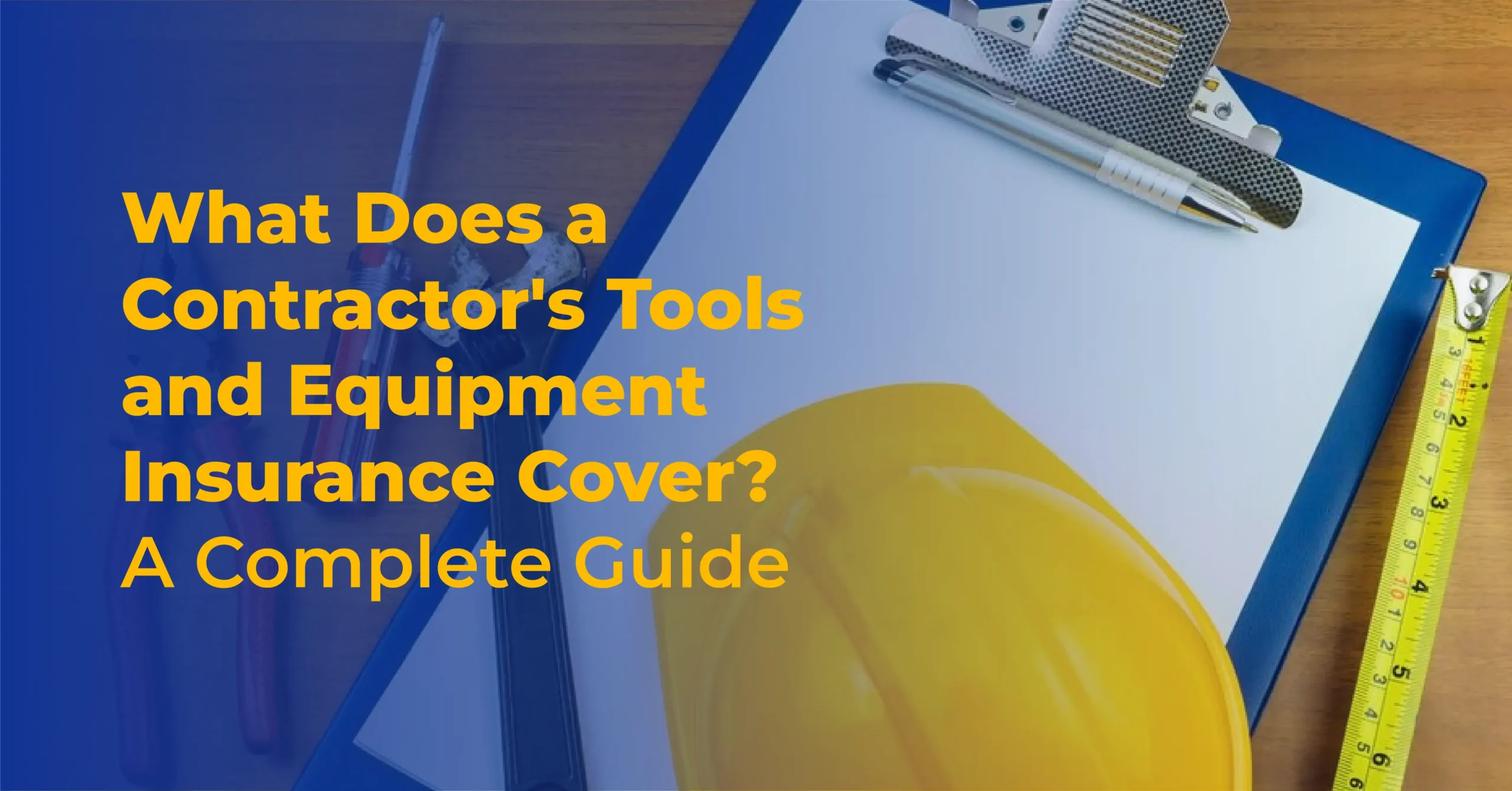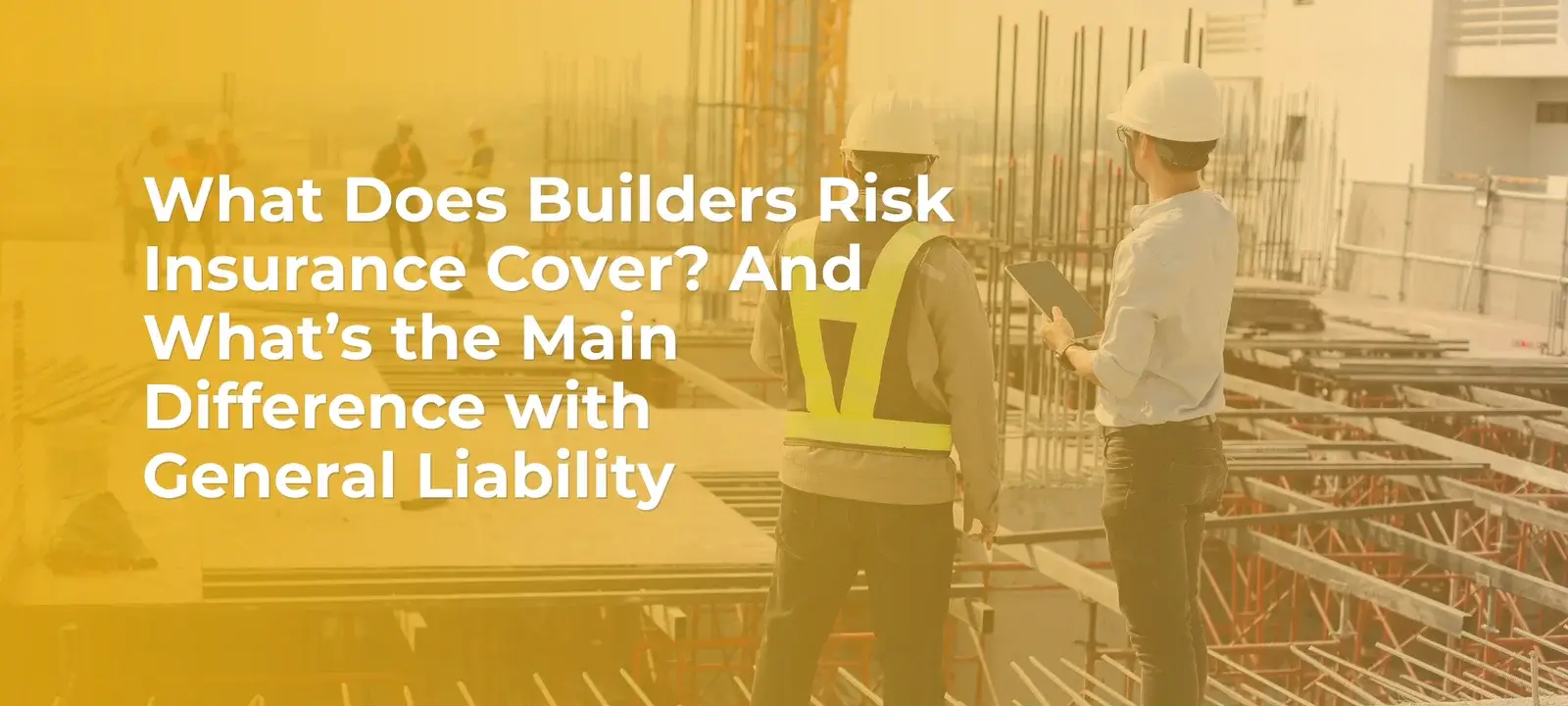Contractors’ tools and equipment insurance covers the cost of repairing or replacing stolen, destroyed, or damaged tools and equipment through perils such as fire, theft, vandalism, or accidental damage-they’re in storage, on the job site, or being transported. Most policies also cover rented or borrowed equipment. They don’t, however, typically cover normal wear and tear, breakdowns, or warranty issues that pass beyond the typical coverage limit.
Why Every Florida Contractor Needs Tools and Equipment Coverage
Construction is a growing sector. Since more projects are being built every day, there is always a need for construction equipment. Utilizing this equipment always involves the inherent risk of damage, theft, and accidents. That is why Construction Equipment Insurance is so crucial.
Contractor equipment insurance – or construction equipment insurance – is something you don’t even think about a lot until something goes wrong. But it does make a difference. Your equipment and tools are big investments, and when something goes wrong, it can take a big hit out of your wallet. The right insurance can protect you from that kind of financial hit.
And of course, this is Florida. With hurricanes, floods, and unexpected storms, the weather will ruin your equipment in a heartbeat. Equipment insurance saves you from having to scramble. It provides you with the peace of mind to be able to bounce back quickly and get back on track with your projects, no matter what Mother Nature plans for you.
What’s Covered: From Power Tools to Heavy Machinery
In the case of tools and equipment insurance, the policy will typically cast quite a broad net. It is meant to cover the equipment you rely on from day to day to get the job done, from a drill to a bulldozer.
Following is a list of what of what if generally covered.
- Hand Tools & Power Tools: Think drills, saws, nail guns, wrenches, etc. If it’s in your truck bed or toolbox, it likely is covered.
- Heavy Equipment: Backhoes, skid steers, excavators, forklifts, these are the high-ticket items on the list, too.
- Job Site Equipment: Scaffolding, ladders, generators, compressors. The site essentials you transport to the site.
- Rented or Borrowed Equipment: Many policies also cover tools or equipment you’re renting short-term or borrowing, which is a big thing when you’re working on multiple sites.
- Transit & Storage Protection: Whether your gear is in the back of your truck or locked up at a job site overnight, you’re covered for theft, fire, vandalism, and certain kinds of damage.
Bottom line, if your equipment is making money for you and it shouldn’t be in a building, there’s a good chance it’s covered under this type of policy. Just make sure the value of your policy is equal to the total value of your equipment, especially the expensive stuff.
What’s Not Covered: Common Gaps to Watch Out For
While tools and equipment insurance encompasses a variety of items, some important exclusions exist. Here’s an outline of what your policy most likely doesn’t include:
- Planes or boats: These are aircraft, such as drones, boats, and anything else. If it’s floating or in the air, it’s not covered under this policy.
- Contraband or Illegal Items: No surprise here. Illegal goods or property used for illegal purposes aren’t covered.
- Property Rented or Leased to Others: Rented equipment used by someone else is generally excluded, unless specifically stated otherwise in your standard policy.
- Property borrowed from others: Similar to rental, once your equipment is out of your hands, coverage is not provided unless the policy states otherwise.
- Equipment used for underground mining: Typically not covered is loss or theft underground by underground miners or tunnelers.
- Vehicles on the highway: Trucks, trailers, or anything used for highway travel are excluded here. They are covered under commercial auto insurance.
- Waterborne property: Tools and equipment transported by water (such as aboard barges and boats) are not covered under a tools and equipment policy.
Pro Tip: Lite Speed Insurance checks your policy routinely so that you are not missing any coverage. Furthermore, if you require coverage that falls under any of the items listed, we will assist you.
How to Choose the Right Policy for Your Trade and Budget
Finding the right insurance to provide real protection for your business hazards is not just a tick-the-box exercise. The coverage needed is usually heavily influenced by the trade, the headcount, and the overall risk involved in the tasks undertaken. A simple handyman and a multi-site roofing team cannot be treated with the same policy. Lite Speed fills that gap by gaining insight into your business so that you do not over-insure yourself and end up paying for unnecessary costs, or worse, getting underinsured if things go wrong.
We understand that there is a budget to track, which makes it tough for contractors with a rotating payroll, a growing equipment inventory, and costly job sites. Lite Speed accepts what other insurance providers would deem high risk and offers adjustable payment plans, providing much-needed relief. It doesn’t matter if you are trying to expand your crew, are new to the business, or have dealt with compliance challenges for years; getting insured with affordable premiums is our business for your convenience.
Conclusion
Contractor’s tools and equipment insurance is not only a good idea but also a viable investment in the equipment that allows you to conduct business. You transport a generator to a job, store your power tools in a trailer, and rent equipment for major projects. Insurance can save you a huge headache and bill down the road. If you are in Florida with unpredictable weather and high-risk job sites, you need to have insurance on your equipment and tools that you use to conduct business.
Let’s Make Sure You’re Covered
Unsure whether your existing policy covers everything it should? Lite Speed Insurance provides the solutions. We engage exclusively with Florida contractors to help them find reasonable, flexible coverage that meets the demands of their trade, risk, and budget.
Get a rapid, no-stress policy review today, and ensure your tools are as secure as your reputation.
FAQs
- What is a contractor’s tools and equipment insurance?
Insurance coverage that can help protect you, the contractor, against loss or damage to owned property such as tools, equipment, or machinery. It covers theft, vandalism, etc., and other losses, as well as while in storage, in transit to a job site, etc. - Does the law require this insurance in Florida?
No, but it may be required by your job site, city, or general contractor before your last day of work. - What types of tools and equipment are covered?
Most policies will typically cover hand tools, power tools, compressors, generators, ladders, and some of the larger equipment, such as skid steers or excavators. - Does this cover rented or leased equipment?
Sometimes it does, but every policy is different. Lite Speed can help you find a way to tailor this to your optimal equipment mix. - Am I covered if my tools are stolen from my truck overnight?
Yes, if you have transit or off-site coverage on your policy, which we highly recommend contractors get because they tend to be mobile. - What if I leave my tools at a job site overnight?
Coverage may apply if theft or damage occurs, but insurance carriers might require certain security measures (locked containers, surveillance, etc.). - Does homeowner’s or general liability insurance cover my tools?
Nope, most of those policies exclude tools and equipment, which is why a separate policy is crucial. - How much does tools and equipment insurance cost in Florida?
It varies based on your trade, equipment value, and risk exposure, Lite Speed offers flexible plans starting at competitive monthly rates. - What’s the difference between tools & equipment coverage and inland marine insurance?
Tools & equipment is a type of inland marine insurance, tailored for contractors’ mobile assets. - How do I get a quote or add this coverage to my policy?
Just contact Lite Speed Insurance, we’ll review your needs, recommend coverage limits, and can often get you covered the same day.
Let’s Discover More About Litespeed
How Much Does Builders Risk Insurance Cost in Florida?
Subcontractor vs. General Contractor: What’s the Key Differences




